Expert Q&A: Dr. Hans Joosten
By Amy Nelson
Dr. Joosten has been intensively involved in United Nations Framework Convention on Climate Change (UNFCCC) negotiations and Intergovernmental Panel on Climate Change (IPCC) guidance development, especially with respect to accounting for emissions from organic soils, and in the Food and Agriculture Organization’s (FAO) advancement of climate-responsible peatland management. He is on the steering committee of the Global Peatlands Initiative, a UN Environment-led program that is working with the Democratic Republic of Congo, the Republic of Congo, Indonesia and Peru to enable, activate, amplify and accelerate the conservation, restoration and sustainable management of peatlands. In 2010 Dr. Joosten received an Honorary Doctorate from the University of Batumi for his efforts in studying and protecting the mires of Colchis (Georgia). In 2013 he was awarded the European CULTURA Prize for Sustainable Land Use, and the Research Award Sustainability of the German Federal Government. In 2014 he was elected as foreign member of Det Kongelige Norske Videnskabers Selskabs Akademi, the oldest learned academy of Norway. In 2018 the International Peat Mapping Team, of which he was part, won the $1 million Indonesian Peat Prize.
How did you become interested in peatlands?
I was born at the margin of a peatland, but I didn’t consider it so special because it was part of daily life. Only when I moved to a city to start studying biology, did I begin to realize how interesting they were. Once that happened, I got involved in the conservation, of peatlands, which prompted me to learn more about them. The more I learned, the more fascinated I became. I ended up doing all of my Master’s theses on peatlands. My fascination with peatlands is still expanding, not just geographically, but conceptually—not just looking at nature, but also culture. My entire life is now all about peatlands.
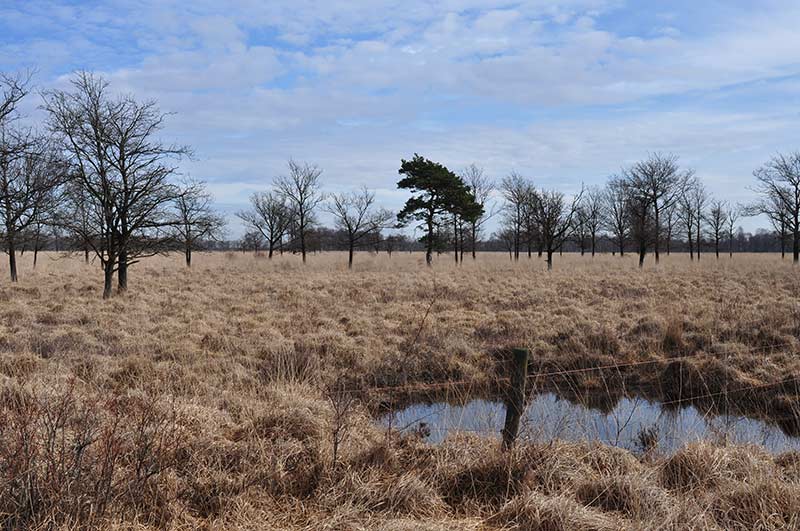
Are the peatlands that surrounded your home still there?
Yes. It was a very big bog, but even when I was young, it had already been almost completely destroyed. I have been very active in trying to protect what is left and restore some of it. I founded a local Peatland Conservation Society, which is still active.
In addition to your role at the University, you are Secretary-General of the International Mire Conservation Group. Tell us a little about the mission and work of that organization.
The International Mire Conservation Group fights for peatland conservation on an international level. It has expanded from a more Europe-centered organization that was focused on scientific conservation issues to a global network that is very busy on a political level as well.
You have been involved in United Nations Framework Convention on Climate Change. To what extent have peatlands been discussed at recent Conferences of the Parties? Were peatlands factored into the Paris Agreement?
People talk a lot about reducing emissions from forest degradation, but hardly anyone talks about peatlands because they cannot imagine that something that is so small is so important. I always say that if you cannot imagine that something small is important, you have never slept with a mosquito.
For seven years, I have been the official negotiator of Belarus in the Climate Convention. The first time peatlands were presented in the Climate Convention was 2006 in Nairobi. Then we had the Bali meeting [COP13] in 2007, which was powerful for two reasons. First, the strategy of Reducing Emissions from Deforestation and forest Degradation (REDD) in developing countries was initiated. [REDD is a mechanism developed by Parties to the UNFCCC that creates a financial value for the carbon stored in forests by offering incentives for developing countries to reduce emissions from deforestation of forested lands and invest in low-carbon paths to sustainable development.] Second, this meeting was happening in Indonesia while peatlands there were burning. A lot of the air traffic was blocked by the haze. That opened up more discussion about peatlands, and some countries, such as Iceland and Belarus, started to bring in proposals to establish peatland protection and restoration as accountable carbon emissions reduction tools under the Kyoto Protocol. That eventually led, in 2012, to the inclusion of a new “activity” in the Kyoto protocol: rewetting of peatlands became accepted as a way for countries to reach their commitments.
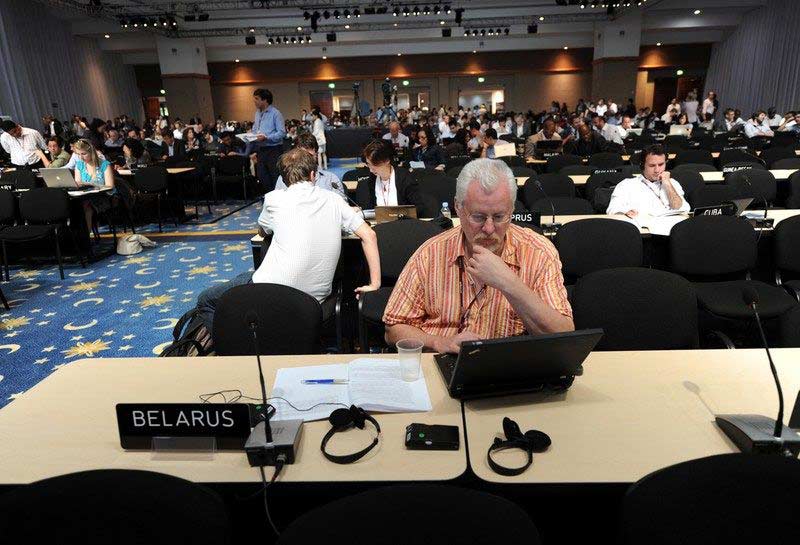
Simultaneously, we had a lot of discussion in REDD about whether the soil under the forest belonged to the forest concept. Indonesia was in favor of including peatland soils in their forest concept because that would mean reducing emissions from deforestation would also be applicable to these very concentrated carbon stores in their peat swamps. Whereas Brazil, which was not aware it had peatlands, was concerned that if peat soils were accepted as part of the forest concept, all the REDD money would go to Indonesia because protecting forests there would be more effective from a spatial point of view than protecting forests in the Amazon. You had a similar division in the NGOs. At that time, Greenpeace was afraid that REDD money going to peat swamp forests, which are in some aspects less biodiverse than mineral soil tropical forests, would be diverted from mineral soil forests. In 2011 in Durban, South Africa, the decision was made to include both peatland rewetting as an instrument for reducing emissions under the Kyoto Protocol and to have peat soils as an inherent part of the forest concept under REDD. The Paris Agreement says that achievements of pre-Paris negotiations, like REDD and the Kyoto Protocol, are to be taken along in the Paris Agreement. So, under the Climate Convention, accounting for peatlands drained for forestry (which is a big issue in the Scandinavian countries and in Russia) is now obligatory, but accounting for peatlands drained for cropland and grazing lands is not. Accounting for those types of drained peatlands, however, is obligatory for members of the European Union, because their own domestic policy requires that.
How much do we really know about where the world’s peatlands are, and how far along are we, in terms of mapping them and understanding the state of the world’s peatlands?
The answers to those questions depend on the level of detail you seek. The distribution of peatlands throughout the world follows a very clear pattern. We have a big girdle of peatlands in the subarctic and boreal zones. We have a similar zone in the tropics, around the equator. We would also have such a zone in the Southern Hemisphere if there were more land on this level. In the places where there is land, like in Tierra del Fuego, the Falkland Islands, or subantarctic islands, there is an abundance of peat. This has to do with the way Earth’s air masses, which are most warmed up at the equator and rise up, are distributed over the globe.
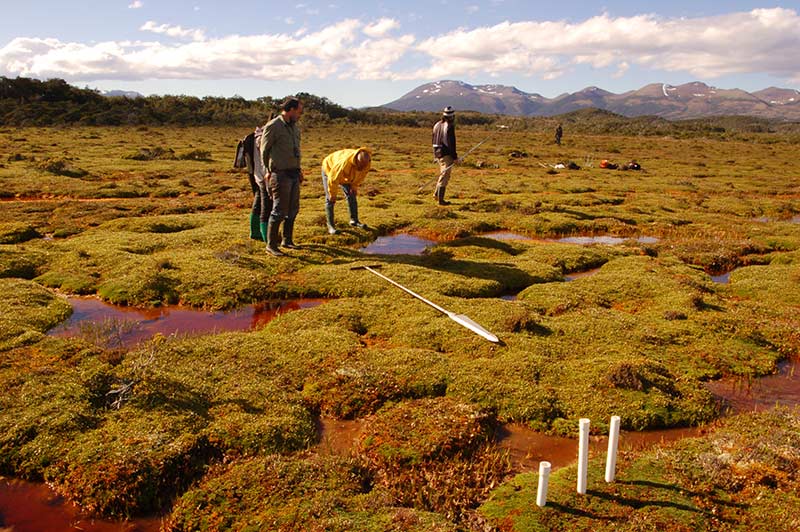
The way Earth rotates also affects peatland distribution. The fact that you have many peatlands in the eastern U.S. has to do with the planet turning and moving under ocean air masses. Mountains also affect the distribution of peatlands because of the way they block air flow, push it upward, and allow it to rain. So, on this level, we have a fairly good idea of where peatlands are. As far as peatland mapping within countries, that depends on the peatland tradition. Canada and Russia, for example, spent a lot of time in the 20th century mapping their peatlands. In the tropics, the general opinion in science until 1908 was that peatlands could not exist there because it was too hot, and decomposition proceeds too quickly. In mineral soil forests in the tropics, you can hardly find a layer of humus because leaves and branches are immediately eaten by ants, bacteria, and fungi. You only have a very shallow soil layer, and that gave people the impression that there could not be an accumulation of organic material there.
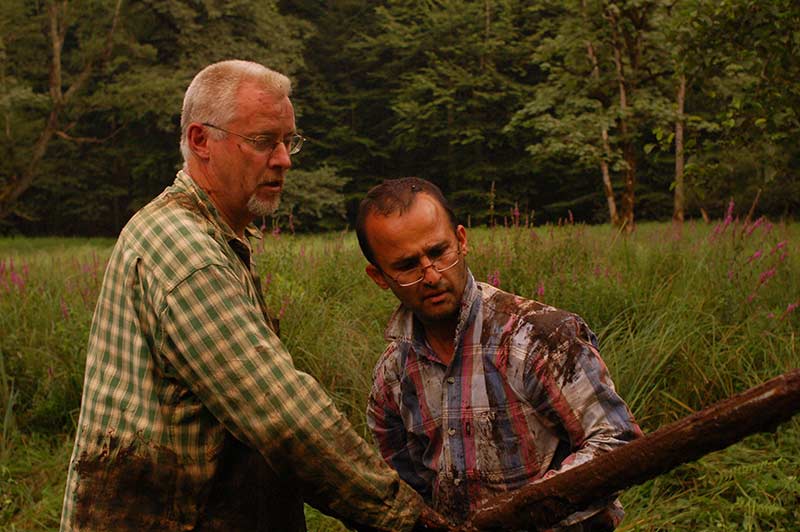
Yet scientists very recently mapped the world’s largest tropical peatland (measuring 145,000 km²) in the Congo Basin. Why did it take so long for that to be discovered?
The reason why that peatland was not known about until recently has much to do with the history of colonialization. Until recently, peatlands that had been discovered in the tropics were in Indonesia and Malaysia. That is because the colonizers of these countries, the Netherlands and the UK respectively, had knowledge of peatlands and recognized them [and their potential for agriculture]. As a result, peatlands in Malaysia and western Indonesia have now all been drained and planted with crops to support the production of palm oil and other products. But other colonizers, like Belgium and France in the Congo Basin, and Spain and Portugal in South America, did not have a peatland background. They didn’t even recognize peat when they were standing on it. That is why the peatlands in Southeast Asia were discovered earlier and – in combination with differences in population pressure, also used, and degraded much earlier than other tropical peatlands. Peatlands in the Congo Basin, on the other hand, have been even further “protected” because they are not easily accessible, and there has often been war there.
Some of the first peatlands to be discovered in South America were in Suriname, where Dutch people recognized and mapped them in their colony. The Portuguese, who colonized Brazil, on the other hand, had no eye for peatlands. We now know that at least in the western part of the Amazon basin, there must be very many peatlands that are still undiscovered. There is no satellite type that can look into the soil, and peatlands are defined by the presence of peat, which is underground, organic matter. But peat is actually water. Under natural conditions, the water content of peat is 90-95%. (Peat is actually wetter than milk and beer!) Water does not make sharp jumps in height. It is always smooth. So, peatlands are somewhat observable from satellite imagery. Vegetation can obscure the surface, but trees that grow in peatlands grow all in the same situation and reach a similar height, so with some knowledge of landscape ecology, vegetation, and hydrology, you can get a fair indication of where peatlands are from satellite imagery. In a report I published in 2012 for the FAO and Wetlands International, I included Google imagery that included the peatland that had been discovered in 2016 and described in the journal Nature last year.
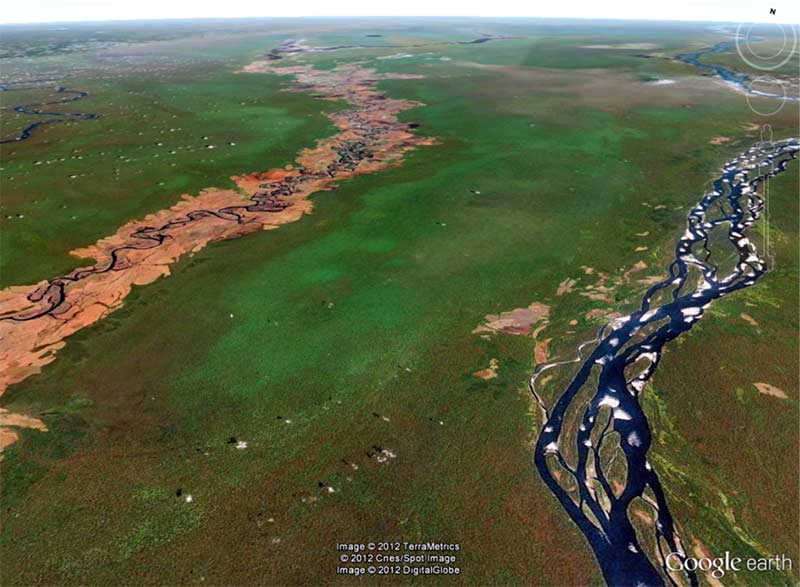
There is no 100% reliable remote sensing instrument for discovering and mapping peat though, so you really have to go in and do coring. In the tropics, that is very difficult. You sweat yourself to death, and in the evening you have to pull bloodsuckers from your body. It’s not an easy job. But people are working on this. In the last few years, extensive peatlands have been discovered in the Peruvian part of the Amazon Basin. Unfortunately, these areas are becoming increasingly opened for cultivation for palm oil, oil, and other resources.
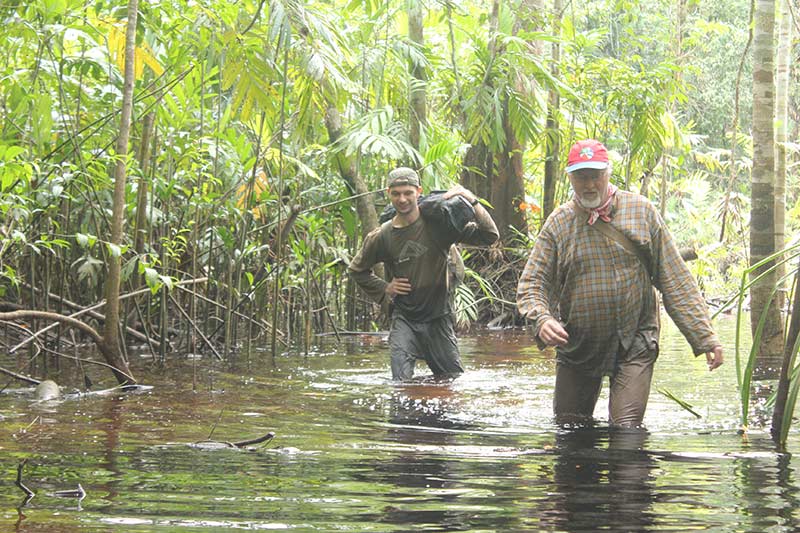
What are the major differences between tropical peatlands and peatlands in boreal and temperate zones?
Peatlands in the U.S. are highly diverse, consisting of different types of vegetation and physiognomics. In northern and oceanic areas, where there is a good supply of atmospheric water, peatlands are mainly built of mosses. Mosses can do that because they grow upward, have no roots, and need a constant water supply. In wet climates with little evapotranspiration, such as that of Canada, mosses dominate peat formation.
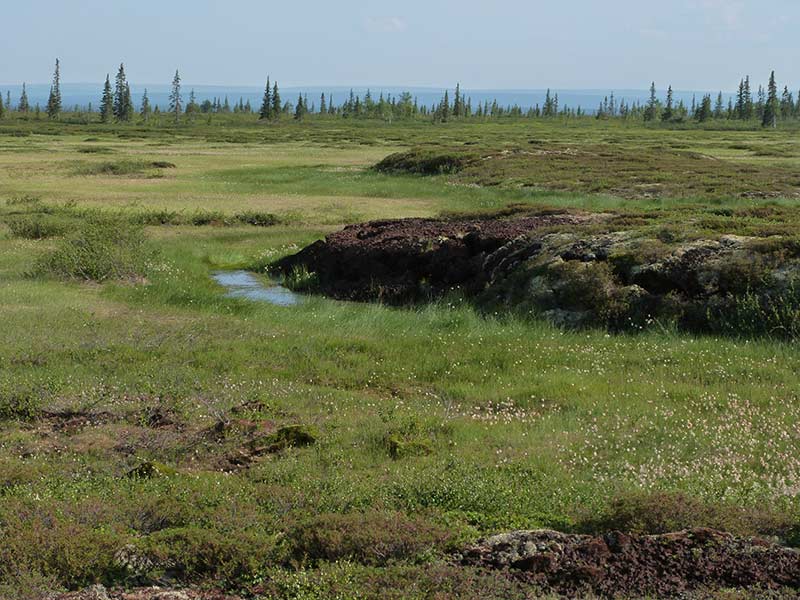
If you go to places where the climate differences over the year are more extreme, such as in the prairies of North America, the steppe region of Russia, the pampas of Southern Argentina, and in the subtropics, peat formation is taken over by grasses and sedges. The adaptation of peatlands is that when atmospheric conditions become worse for protecting organic material because of evapotranspiration and increased loss of water, peat formation goes underground. Just like you go underground to evade your enemy in war, peat goes underground to avoid its enemy, the atmosphere, which sucks the fluid out of it.
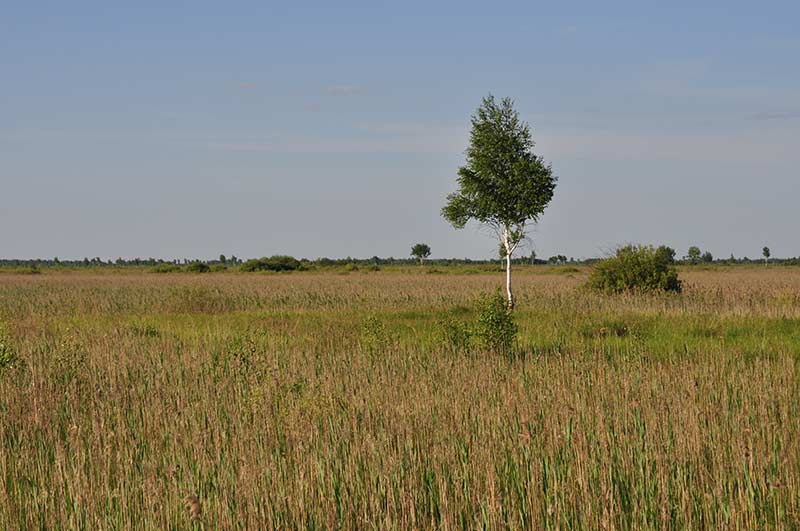
Further into the tropics, where the climate is very hot and very wet, peat formation takes place only by deep-rooting trees. The trees have the advantage that the material they are building is lignin, a very complex molecule for which nature has not yet developed the biochemical pathway to break down in anoxic conditions. That is why peat in the tropics is all root-wood peat. In parts of Europe and North America, you have alder peat swamps in the temperate zone. Alder is an evolutionary subtropical species, so alder peat swamps are a touch of the tropics in the temperate zone.
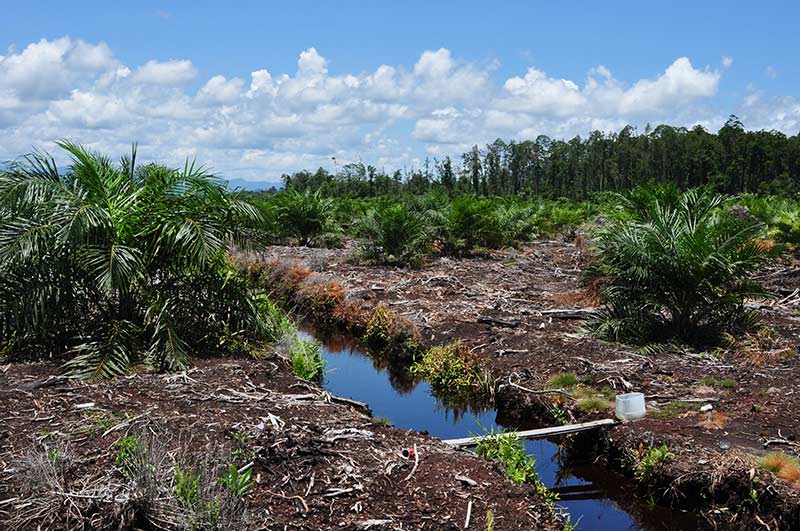
In the Northern Hemisphere, in North America and Asia, there are other trees, such as black spruce (Picea mariana) and larch (Larix) that can grow in these very wet conditions. Peatlands grow upward. So if you are a tree in a peatland, and the peat is growing upward and the water level is rising, you will drown unless you have the capacity to build new roots on a higher level. In Europe, we have no trees that can do this, so there is a differentiation in openness of the peatlands because of the properties of plants that grow in them.
Is there any kind of central database that holds information related to the world’s peatlands?
At the Greifswald Mire Center and through the framework of the International Mire Conservation Group, I have been working for 30 years on a Global Peatland Database. We collect data from researchers all over the world, we have extensive libraries, and we do systematic peatland mapping. In recent years, we have worked on mapping peatlands in East Africa, Papua New Guinea, and Iran. I have even looked at peatlands in North Korea. Not long ago, actually only a week before, I was on a peatland located 60 kilometers from where North Korea tested its first hydrogen bomb. We also collaborate with other groups.
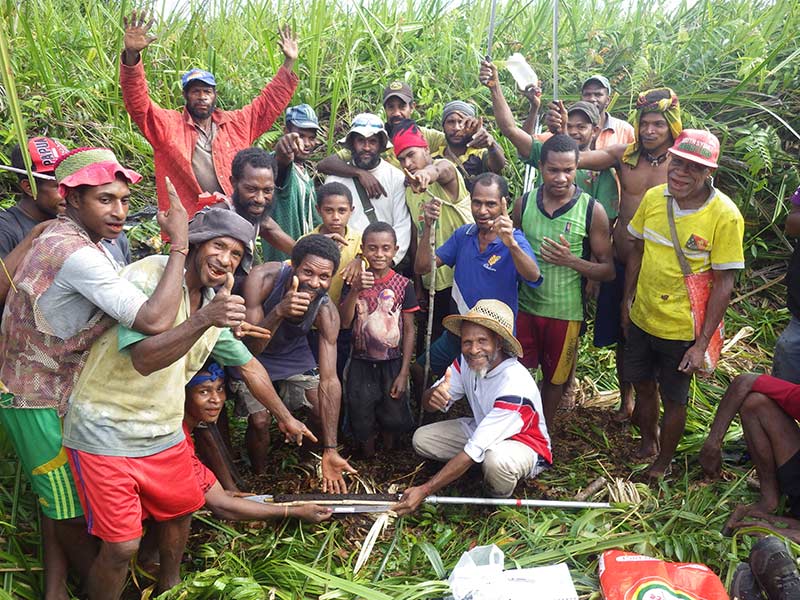
FAO has a peatland database. CIFOR (Center for International Forestry Research) has specialized in tropical peatlands, and they have made one of the best maps on tropical peatlands there is). In the framework of the Global Peatland Initiative, we are trying to bring these things together.
Which countries have lost the greatest percentage of their peatlands, and what caused those losses?
The continent that has lost the greatest percentage of its peatlands is Europe. This is because Europe has a good climate for arable agriculture and livestock, they started draining peatlands a long time ago, and they have always had a high population. More than half of Europe’s peatlands have been drained. The western and southern countries of Europe have lost more than 90% of their peatlands as living entities. (There is still peat in the soil but it is oxidizing and degrading). Central European countries have lost between 50-90% of their peatlands. Russia, Sweden, and Norway have lost less than 50%. Countries like the Netherlands, Germany, and Denmark have lost more than 99% of their living peatland resource. Two thousand years ago, the Netherlands had 1.5 million hectares of peatlands. Now, they have less than 10,000 hectares of living peatlands.
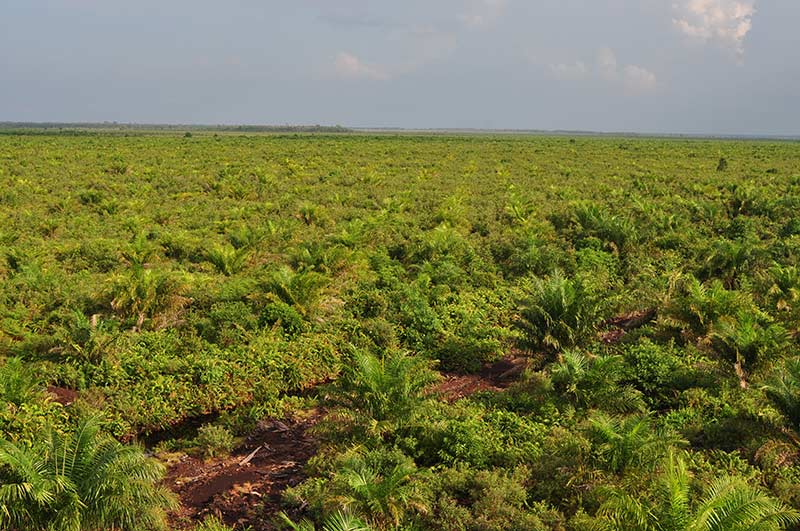
Indonesia and Malaysia have been losing peatlands primarily in the last 20 years. Indonesia is now responsible for half of the world’s peatland emissions. [When peatlands degrade, they go from being a carbon sink to becoming a major carbon source]. This is because of the extent of their lost and degraded peatlands and the fact that degradation goes much faster under tropical conditions (five times faster than in Central Europe, for example). Finland has also lost a lot of peatlands for forestry, but the climate is so cold that degradation happens much more slowly.
It’s like a bomb. You can have a bomb in your room and still live a good life. But as soon as you put fire to the fuse, you have to start running.
That makes it all the more important to protect the newly discovered peatlands.
That is the issue, but it raises an interesting dialectic. I always say living peatlands have no importance for the climate. More than 80% of the world’s peatlands, including huge areas in the tropics, Alaska, Canada, and Siberia, are still undrained. But all these peatlands sequester per year less carbon than one percent of the total annual human carbon emissions. So the living peatlands are not going to solve our problem. When they are drained, however, peatlands lose a lot of carbon. The peatlands that have been drained emit 20 times more carbon than the undrained, good peatlands can sequester. With respect to peatlands, it is about rewetting and restoring to avoid emissions. Sequestration is interesting, and certainly relevant. But the big issue is emissions that come from drained peatlands. From a climate point of view, the newly discovered Congo Basin peatlands have no importance…as long as they’re not touched. The moment you touch them, they become a problem. It’s like a bomb. You can have a bomb in your room and still live a good life. But as soon as you put fire to the fuse, you have to start running. As soon as we open up peatlands and drain them, they become explosive.
What are some of the social, economic, and public health impacts of peatland degradation?
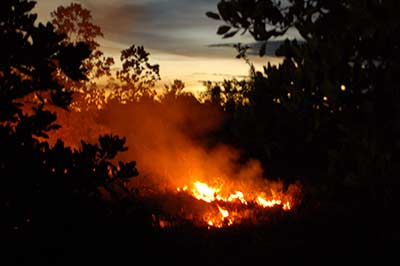
The most obvious impact comes from peatland fires and associated haze. Natural peatlands do not really burn. The big peat fires we’ve had in the last decade in Indonesia, Russia, and the Ukraine, have occurred in peatlands that have been drained, degraded, and largely abandoned with ditches that were never filled back up. When that happens, you have fuel laying around. Then it’s just a matter of time before it is ignited and starts burning [Peat fires can be ignited by natural causes like lightning strikes, but human factors, such as slash and burn, arson, mining activities, etc. are the main cause] The haze from peat fires is a big health problem. It has been calculated that the 2015 peatland fire in Indonesia, which covered two million hectares of drained peatlands, has killed more than 100,000 people and has brought a half million people to the hospital. People in peatland areas in Kalimantan and Sumatra lived half of a year in smoke, and 30% of all children have lung diseases. The fires in Indonesia also caused drastic economic damage, estimated to be between $18-40 billion for Indonesia alone. And additionally, it blocked – for months – air traffic to economic hubs like Kuala Lumpur and Singapore. These are examples of the terrible and immediate effects of degraded peatlands. These types of effects are more of a regional or national problem.
Another effect of peatland degradation is the sneaking oxidation of drying peatlands by microbial activity, which leads to enormous emissions. That is a global burden. Nobody smells or sees this happening, but it is really a time bomb. A third effect is that as the peat oxidizes, the surface of the peat lowers. This has happened in the agricultural areas of the Everglades where sugarcane is grown around Lake Okeechobee. The peat soils there lose 2-3cm of height every year. When Florida floods, everybody talks about storms, but nobody talks about the fact that Florida has lowered large areas of its land. Similarly, when Hurricane Katrina flooded New Orleans, nobody talked about the fact that New Orleans was built on a peatland and that the city has lost five meters of height because of subsidence. Subsidence is a sneaky process. Just like you don’t see your children growing because it is occurring so slowly, you don’t see subsidence happening. But it is happening in many places in the world–even the San Joaquin Valley in California, which has lost meters of height and suffers problems from saltwater intrusion.
One place where subsidence is recognized is the Netherlands. The Netherlands translates to “the low lands,” and it is a well-chosen name because the Netherlands has actually lowered its own land. They began large-scale peatland drainage around 1100. If you take the rule of thumb that after drainage of peatlands, the surface lowers one centimeter per year, than after a thousand years you have lost ten meters. Indeed, most of the area between Amsterdam, The Hague, and Utrecht has subsided eight meters. That’s how you change a country from above sea level to below sea level. Because this was a gradual process, the Netherlands adapted. They started with arable agriculture of cereal grains, but as the land became lower and wetter, they switched to dairy. So Dutch cheese is a product of peatland degradation. As the surface lowered and they could no longer drain it with gravity, they created dykes and pumps. That is how the windmills originated—they were the pumps. The lowering is still happening, and sea levels are rising. The sense of urgency is starting to become more common there. But in many other areas of the world, people are not yet standing against that wall. I have calculated that in this century, the world might lose 10-20 million hectares because it will be flooded by the sea because of continuing subsidence resulting from peatland drainage. We are losing land at a time when we need it most. World population is still growing, we still have billions of people who are too poor, but we are losing potentially productive land because we used it in a way that destroys it.
Indonesia now recognizes this, and they now have a very ambitious peatland rewetting and restoration program. In 2017, they rewetted 200,000 hectares of peatland–more than all of Europe has restored in its entire history. This poor, developing country has done all of that in one year. The President of Indonesia has created a task force, directly under his responsibility, with the aim to rewet 2.5 million hectares of peatlands by 2030. This was all initiated by the direct effects of the fires. Of course they like that they can earn acknowledgement for lessening the climate problem, but they now see peatland restoration as a long-term resilience strategy.
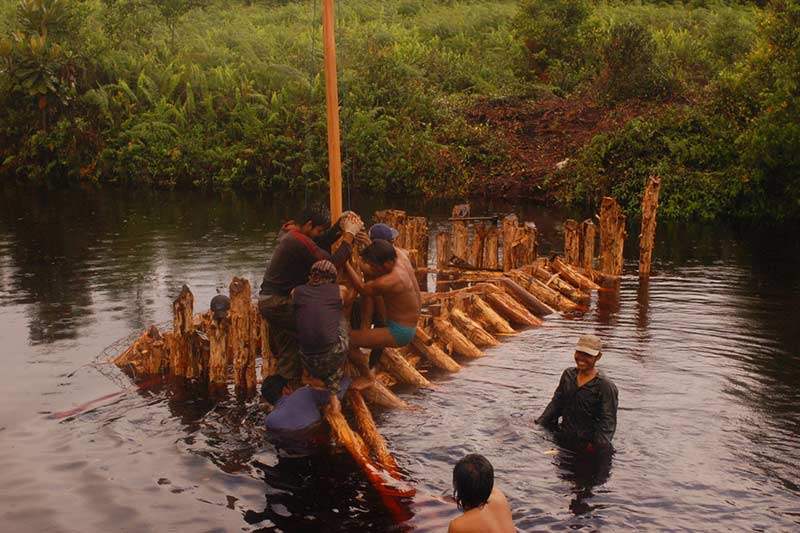
What nations or regions have model policies in place to protect & restore peatlands?
No other countries have a program that is so clearly oriented and addresses the urgency of the problem so directly as Indonesia.
Just as people cannot see subsidence, they cannot see carbon being released. There seems to be a great need to raise awareness of the importance of peatland ecosystems and the need to protect and restore them. Who do you think is doing a good job of raising awareness?
The Global Peatlands Initiative was founded with the purpose of raising awareness. Wetlands International has been very active in this area. The IUCN’s UK Peatland Program is a very ambitious, hard-working program to change the mentality about peatlands in the UK, particularly in Scotland. In Germany, we have a Peatland Dialogue, where we try to spread the word among farmers, water boards, and other stakeholders. On all kinds of levels, things are taking place.
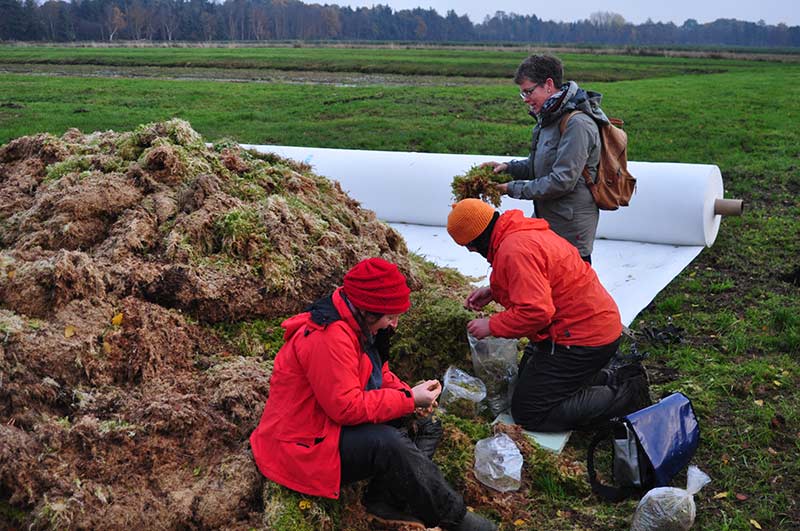
I’ve been doing this for 40 years. As recently as 15 years ago, I was a preacher in the desert, but I have seen substantial progress in awareness-raising in the last 10 years. But it is not yet enough. Every time I give lectures, I always have people telling me, “I’ve never heard about this!” As a conservationist and peatland scientist, I can say they are very important. They are responsible for 5% of all global anthropocentric emissions…but only 5%. They are only a part of big social, economic, and environmental problems. We have so many problems to solve. Peatlands do, however, touch on a lot of other issues in addition to carbon sequestration: water provision and regulation, flood control, biodiversity conservation, production, and many others.
(At this point in the interview, Dr. Joosten takes a break for a minute to grab a beer.)
Do you want to know about a relationship between beer and peat?
Yes, please tell me!
I was phoned today by one of the largest breweries in Germany, Krombacher. Ten years ago, they started a peatland restoration project in Sabangau National Park in Indonesia, and they asked if I could evaluate their achievement. Beer for nothing and peat for free? Of course I will do that!
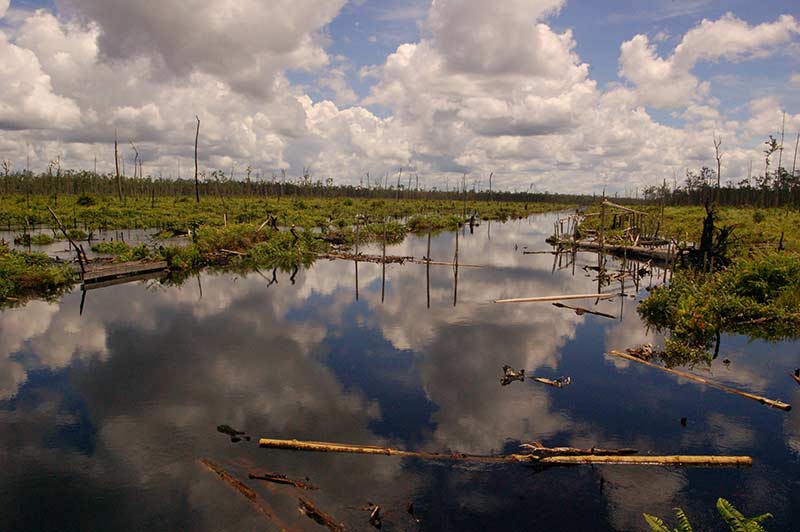
One of your areas of research is paludiculture (crop production on wet soils, predominantly on peatlands). What types of crops can be grown on a peatland, and what potential does paludiculture have, in terms of protecting and restoring ecosystems?
If we want to achieve the goals of the Paris Agreement, we have to decrease net anthropogenic emissions worldwide to zero by 2045-2050. That means all drained peatlands have to be rewetted. Paludiculture is a productive land use that minimizes emissions and stops subsidence. If we want to keep on using peatlands, we have to apply paludiculture. What crops will that involve? We have no idea yet. Our conventional agriculture was developed in western Asia, in the Fertile Crescent of Syria and Turkey, i.e. in a semi-desert environment. Therefore conventional agriculture thinks that productive land must be dry, and they have implemented these ideas on the large scale, also on wetlands. Meanwhile, wetlands belong to the most productive ecosystems on the planet. We have never really focused on wetland plants for agriculture. We are in the early Neolithic era of paludiculture. But we are learning fast and there has been such substantial growth in knowledge in the last five years.
Asian Pulp and Paper is the largest farmer on peatlands in the world. In Sumatra, they have something like 800,000 hectares of Acacia plantations on peat. They noticed that their lands are subsiding so fast that they’ll be flooded by the sea in 15 years, whereas their new pulp factory that they built there for $3 billion is planned to be amortized for 30 years. They are now focusing on rewetting these areas and identifying new, fast-growing tree species that live in peat swamp forests because they have no choice. Either they plant wetness-adapted plants—perhaps with only half the productivity for now because no breeding or selection has taken place—or say, after 15 years, it is over. Paludiculture is the new buzz word in Indonesia, where they have identified 400 species in the peat swamp forest which are useful and have economic potential.
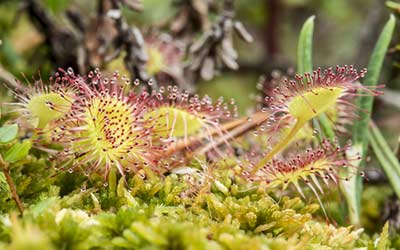
Another example: Two PhD students of mine have established a firm cultivating sundew, an insect-eating plant, which is in high demand for medical purposes, on rewetted peatlands. Last week, they sold the first harvest for double the price they expected, and they later discovered they could have charged four times more. At this moment in the Netherlands, they are testing a cattail (which is an invasive species in North America) as fodder for dairy cows. They have also discovered a water fern (Azolla) that has enormous protein content and can replace soy. Another student of mine is forming a company around the pollen of cattail, which is worth more than its weight in gold because it can be used for feeding insects used in greenhouses for biological pest control. We are discovering, time and again, new applications of plants that can grow in wet peatlands.
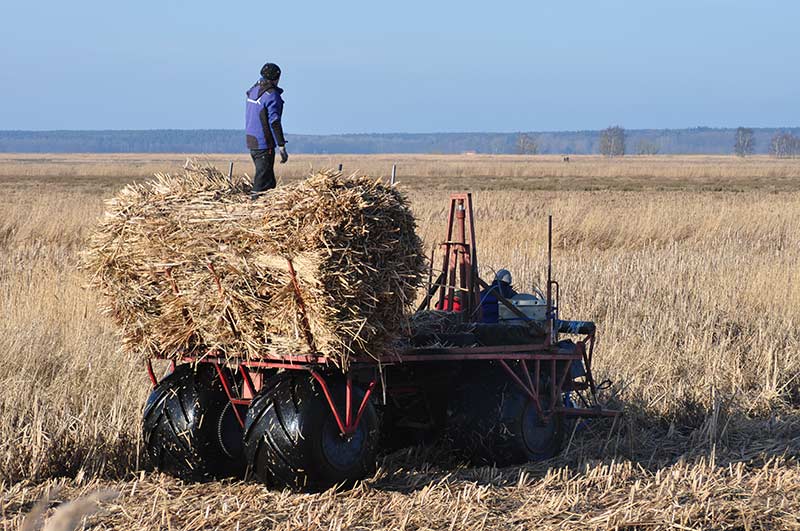
What research related to peatlands do you think is most urgently needed?
Rewetting greatly decreases CO2 emissions, but at the beginning it may increase methane emissions. There are situations where after rewetting, for the first tens of years, the new methane emissions might negate the gain in CO2 emissions reductions. We must know more how we can control or lower methane production (by planting special plants, or by manipulating water level or water chemistry, etc.) after rewetting.
The second thing is to identify crops that can grow under these wet conditions and develop the entire production chain for it. It is not only about identifying crops, but selecting and breeding crops, developing appropriate machinery and logistics appropriate for peatlands. The agriculture we see now is the product of 10,000 years of development, and we have to find a wet alternative to that in the next 20-30 years. This is an enormous challenge.
Anything else you want to say to our readers?
Peatlands are fascinating and inspiring landscapes and ecosystems. A lot of peatlands function with a self-regulation and self-organization that is similar to that of organisms. I think there are no ecosystems that function so much as a system as peatlands. They have played an enormous role in human history–sometimes very negative roles, but also very inspiring roles. They are ecosystems that produce more than they use. They are accumulating systems that are very efficient in dealing with energy and matter. They do not spoil. They save. We can get a lot of inspiration from the functioning of peatlands for how a stable and sustainable world has to be developed.
